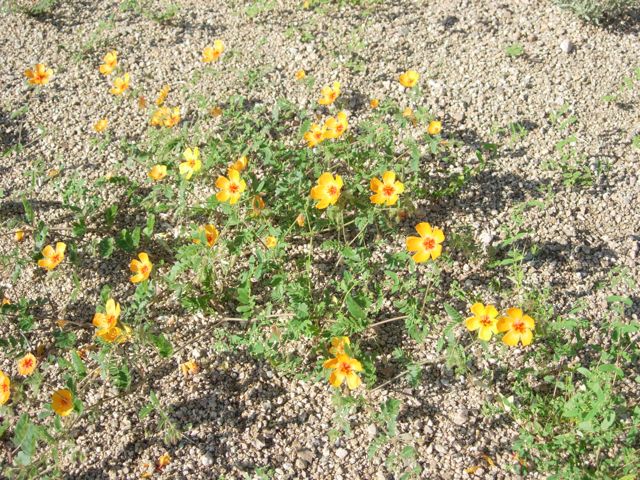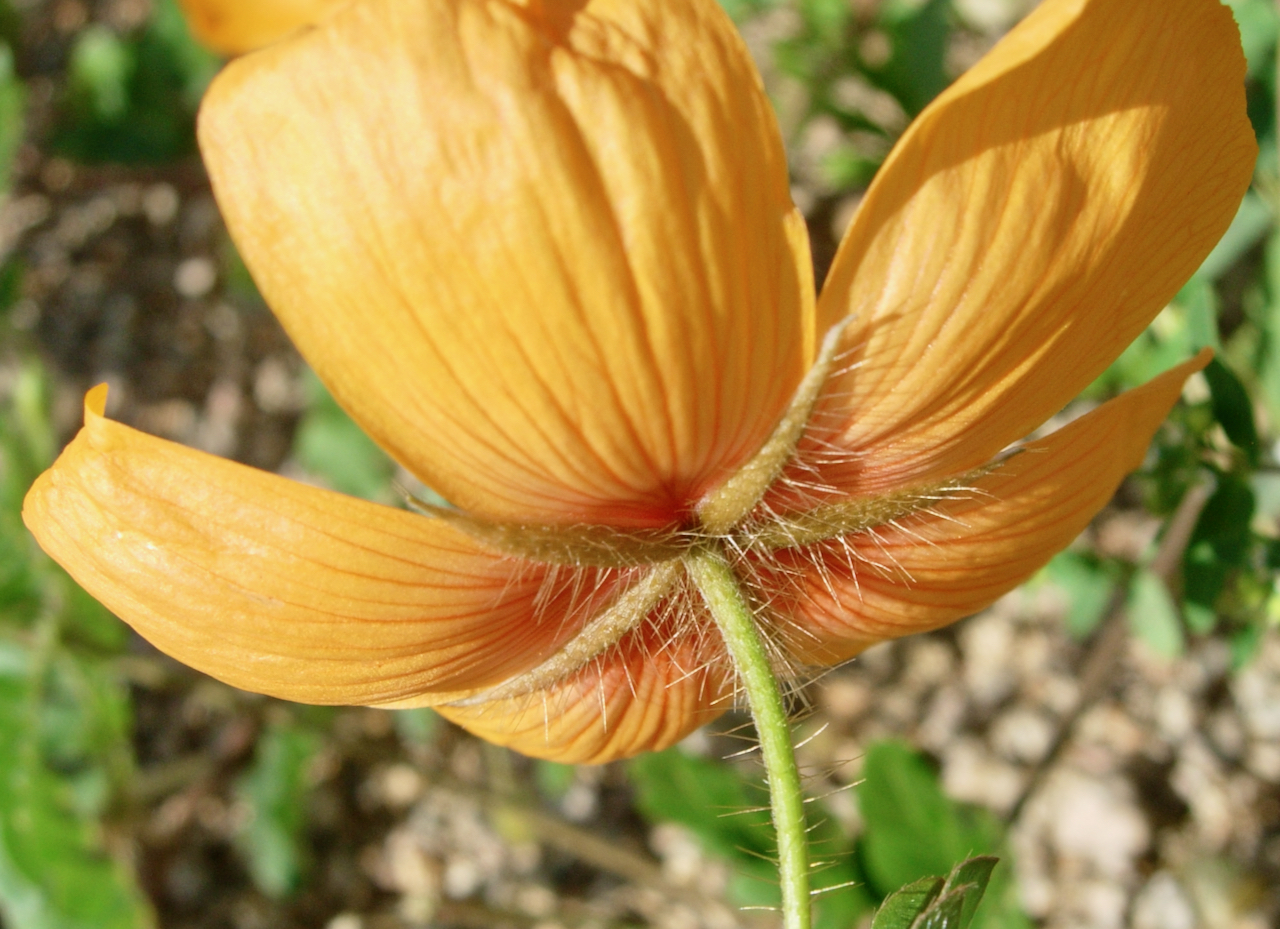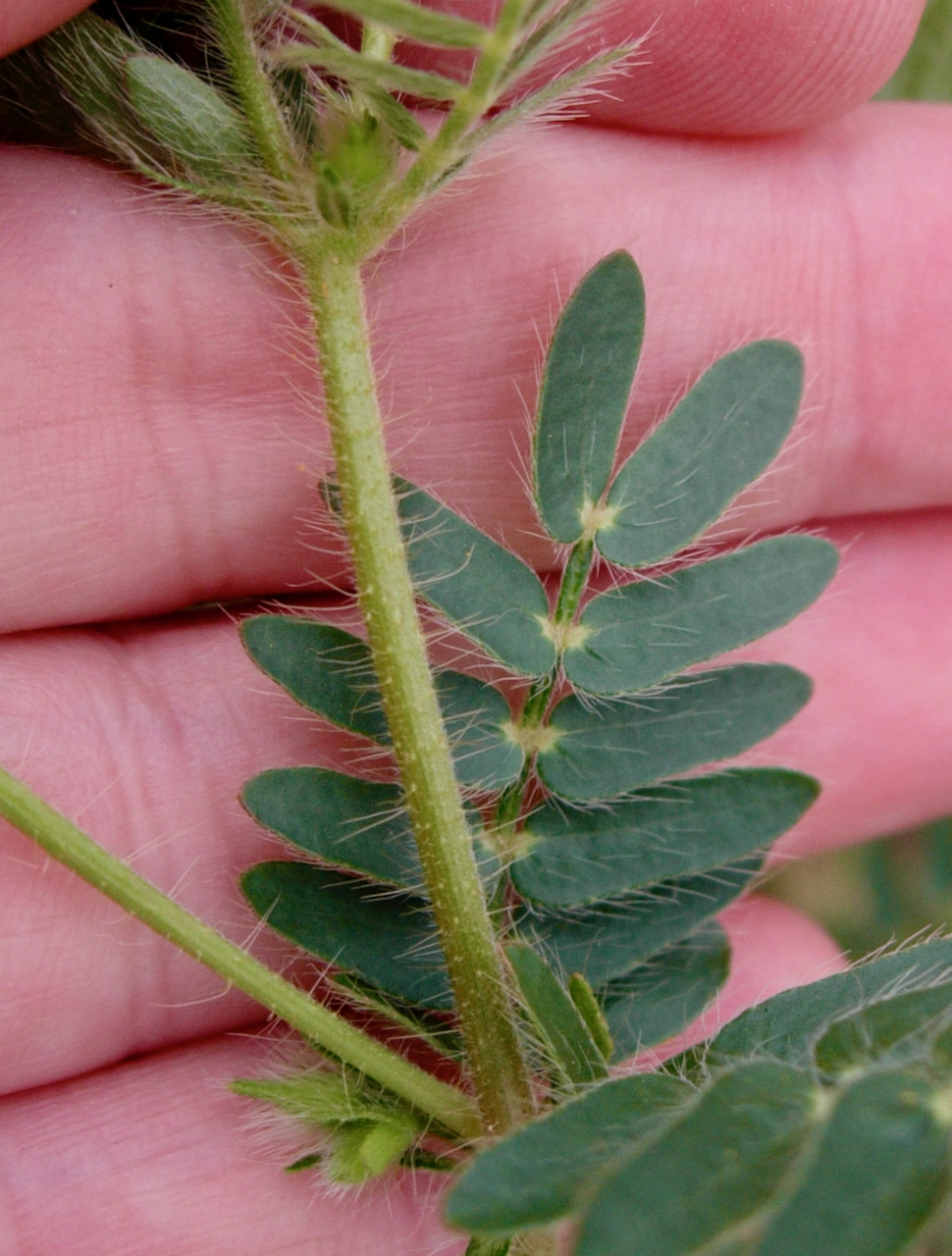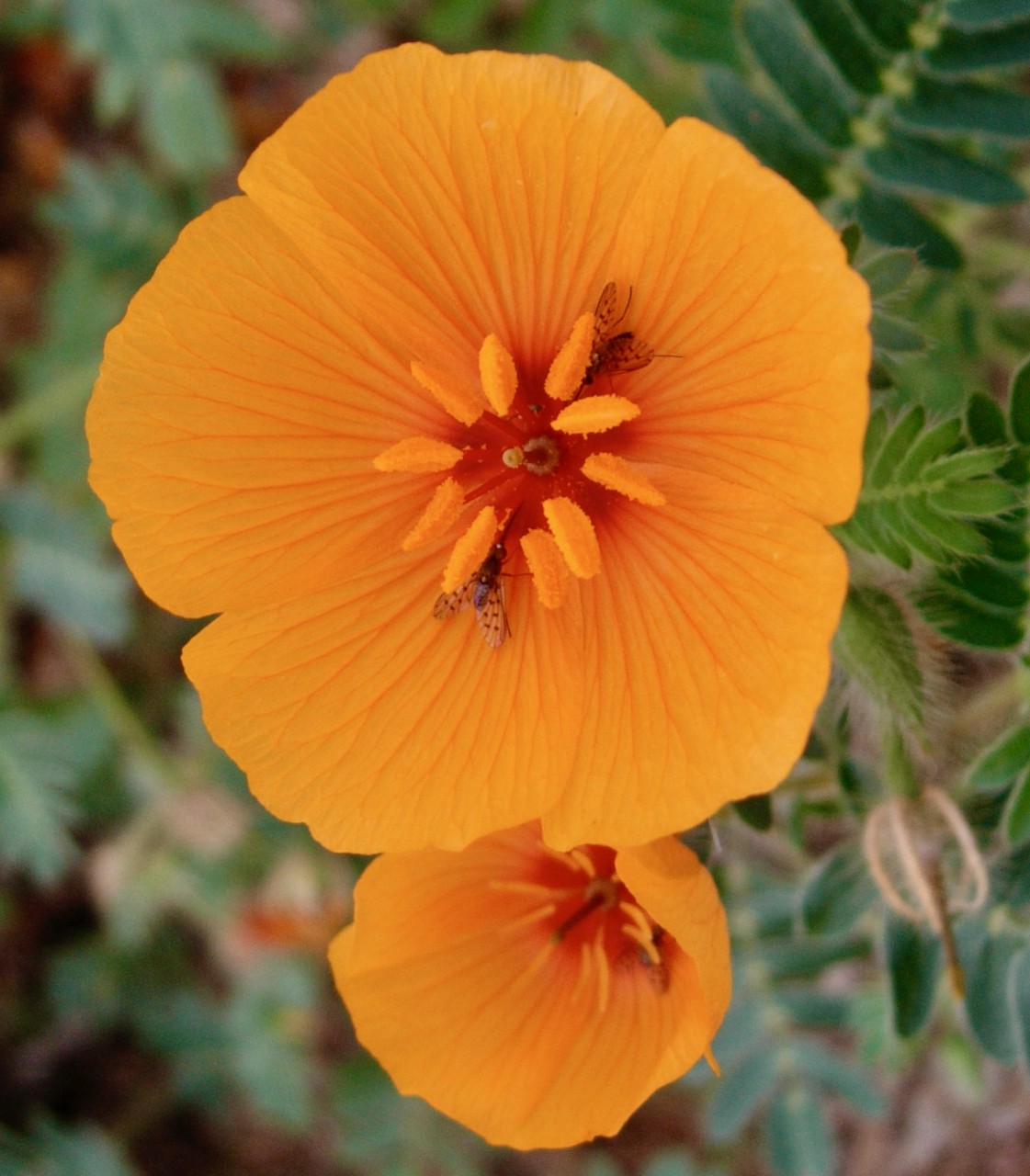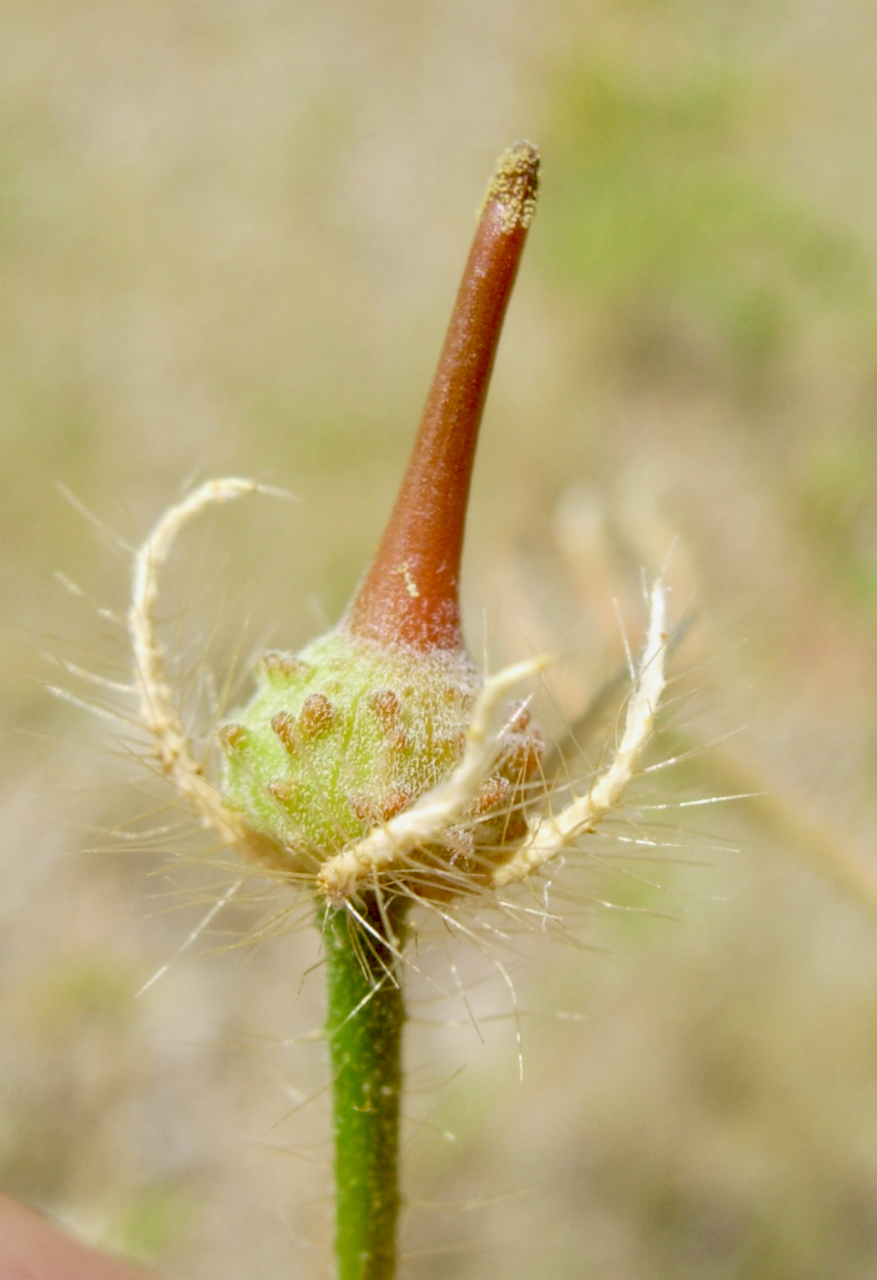Arizona Poppy
Kallstroemia grandiflora
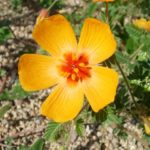
About the Plant
This native annual appears in abundance when the summer monsoon rains are good. Its bright orange flowers, open only during the day, are 1-2 inches wide and quite showy. Usually appearing as a wildflower, especially along roadsides, it is also possible to grow it as a reseeding annual in a landscape situation. Seeds are available for purchase at good nurseries and by mail order. Please see the information from ASU for planting directions. Also, please note that seeds exhibit dormancy and may not germinate for several years.
Notes:
- Though called "poppy", this plant is not in the poppy family. The name is thought to derive from the superficial resemblance of the the flower to those of California poppy (Eschscholzia californica). Both have large, orange flowers. For a detailed comparison, please see the Weekly Plant article on this plant.
- The leaves and growth form of Arizona poppy are similar to puncturevine. Both have opposite, compound, hairy leaves. Arizona poppy is overall a larger plant. Once flowering begins the small, yellow flowers of puncturevine easily distinguish the two plants.
- Other common names for this plant include Arizona or orange caltrop and summer or desert poppy.
Wildlife value: flowers attract a number of insects including bees and butterflies. The seeds are eaten by birds, especially doves.
More Information
Horticultural information from ASU
Photos of fields of Arizona poppy after a good monsoon
Map of distribution in US (blue-green color indicate plant has been introduced to state)
Technical botanical description from SEINet
ID Characteristics
The growth of Arizona poppy is dependent on summer rains. In a wet year, the plant can grow 2-3 feet high and 5+ feet wide. In dry years, the plants will be smaller, hugging the ground, and many seeds may not germinate at all.
